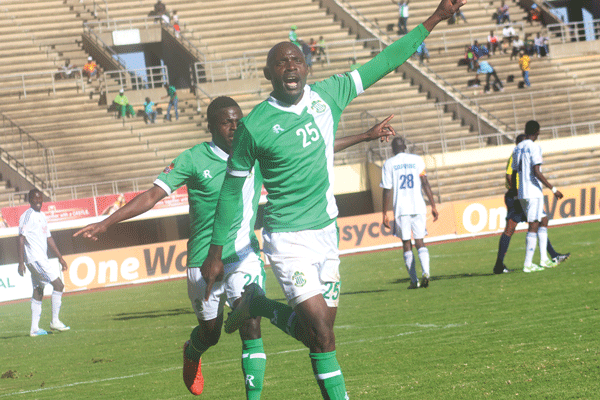
Wherever he goes, Leonard Tsipa is stopped here and there, just to be told how good a striker he is.
insidesport with MICHAEL KARIATI
Tsipa’s 11 goals earned him fame, won him the Golden Boot award and the goals were also influential in him being crowned the first runner up for the Castle Lager Soccer Star of the Year award.
Ironically, the celebrated 11 goals do not even amount to half of the season’s games during the Premier Soccer League season which stand at 15 matches, raising questions as to whether this is a reflection of the ever-declining standards of our local strikers.
In comparison, the top scorer in the Zambian topflight league, Walter Bwalya of Nkana Rangers, scored an impressive 24 goals in their just-concluded season, while in South Africa, the top goal scorer, Zimbabwe’s own Tendai Ndoro of Orlando Pirates, has already hit 11 goals after the first 13 games of the season.
Yet Tsipa, who is affectionately now referred to as “Mudhara Achauya” required 30 matches to come up with his 11-goal tally.
Surprisingly, in Zimbabwe the top goal scorers have in recent years consistently failed to reach the 20-goal mark in 30 matches, with Roderick Mutuma hitting a low 14 goals when he won the Golden Boot in 2011.
Nelson Mazivisa scored 18 goals in 2012 while Tendai Ndoro grabbed 17 goals to become the Golden Boot winner in 2014.
- Chamisa under fire over US$120K donation
- Mavhunga puts DeMbare into Chibuku quarterfinals
- Pension funds bet on Cabora Bassa oilfields
- Councils defy govt fire tender directive
Keep Reading
In the past, Zimbabwe had a proud striking tradition with the likes of the late Shacky Tauro and Gift Mpariwa going over the 30-goal mark.
This was at a time when the then Super League was made up of only 12 teams and 22 games per season.
At one time, in one season, Moses Chunga plundered in 46 league and cup goals. Chunga even believes he scored more but claims there was no proper counting. “I was just scoring and they were counting. The journalists say I scored 46 goals but I think they did not count all of them,” joked Chunga.
There is the argument that the game has changed and defensive methods have improved greatly. But why is it only in Zimbabwe where the scoring rate has gone drastically low?
Also evident is the fact that the total number of team goals have also gone down. CAPS United, the 2016 Zimbabwe champions, could only manage 42 goals in 30 games. The Green Machine were the league’s top scorers but their scoring rate was below two goals per game.
FC Platinum, who finished second behind the Green Machine, scored only 38 goals while third placed Highlanders managed 41 goals.
Dynamos coach Lloyd Mutasa admits that something has gone wrong, saying coaches have a tough job in bringing back the good old days when strikers used to score goals at will.
Observers say one of the reasons why goals are disappearing from the Zimbabwean football scene is that the country has abandoned junior football.
In the past, the country had a junior development programme, which encompassed Under-15, Under-17, and Under-20 leagues.
In these leagues, youngsters used to play for fun, resulting in their basic and natural skills being developed without any pressure on them.
The players were monitored as they graduated from the Under-15 league going upwards. It was during this transitional period that good strikers were identified and advised to concentrate on their prime job — scoring goals.
In addition, each and every premiership club also had a reserve side from where players graduated into the senior team after convincing the coaches that they were now mature enough for top flight football.
This system, which gave birth to some of Zimbabwe’s greatest strikers, has been abandoned.
However, the solution lies in returning to that old system.
For your views, comments, and suggestions [email protected] or WhatsApp or call on 077 3 266 779.











